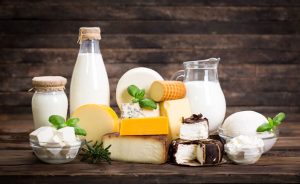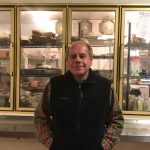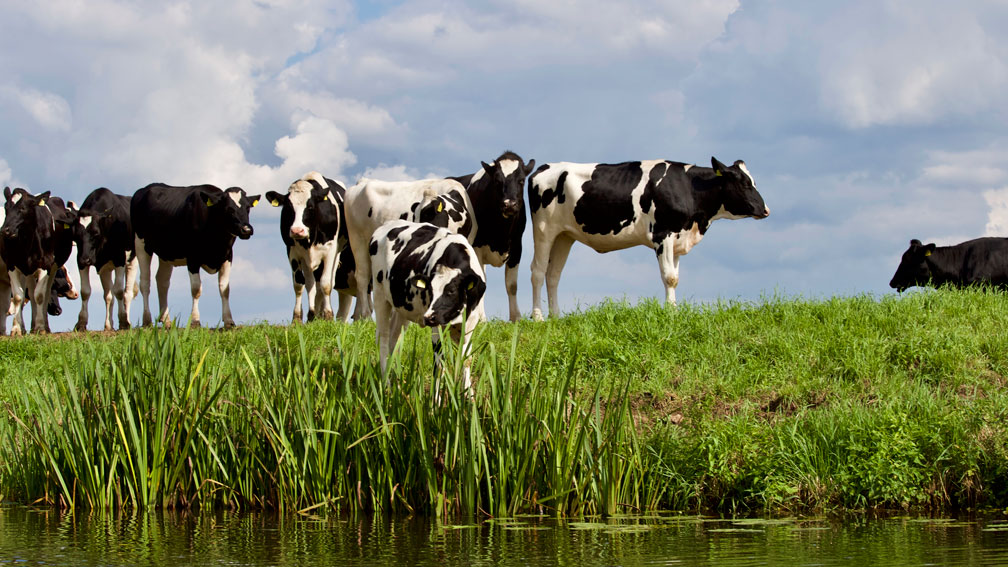Reinventing Dairy
Farm-To-Fork. By: Victor Martino
Last month, Visalia-based California Dairies Inc., the largest milk cooperative in California, announced its shutting down its plant in Los Banos (Merced County), citing a decline in milk volume as the reason.
The Los Banos plant, which has been in operation at its location on Highway 152 since 1925, makes cream cheese and Neufchâtel cheese, neither of which is experiencing significant sales growth.
At first blush it’s tempting for many people hearing about this development to simply think it’s just another case of corporate (or cooperative) consolidation – close one plant, increase profits.
But it’s bigger and far more serious than that.
The U.S. is currently awash in milk and commodity-grade finished goods. There’s a glut. Case in point: According to the USDA, over 78 million gallons of unwanted milk was dumped in 2017. Yes, dumped. Lack of consumer demand. Overproduction.
But that’s just the tip of the dairy-glut iceberg in our country.
Over 800 million pounds of processed American Cheese is sitting in storeage warehouses because of lack of consumer demand. And overproduction. It’s the most put into storage since 1984, according to USDA.
There’s also loads of commodity-grade butter sitting in refrigerated warehouse facilities – about 272 million pounds, according to USDA, which is the most being warehoused since 1994.
Andrei Mikhalevsky, the CEO of Visalia-based California Dairies, the state’s largest dairy cooperative, sighted just this reason – low demand for milk and the dairy glut – as the reason for closing its Los Banos plant.
“The Los Banos plant has been a valued facility with a long history that has served California Dairies and its members well. Unfortunately, the declining volume of milk in California is affecting the entire dairy industry, and CDI is not immune,” Mikhalevsky told the Fresno Bee in a January 16 report on the closing. “These reduced milk volumes, combined with the high cost of operating our Los Banos facility, are the sole drivers behind the decision,” he added. “This decision is in no way a reflection on the hard work of our talented employees in Los Banos or the high-quality products they have produced.”
Dairy farmers in California’s Central Valley are feeling the pain of this lack in consumer demand for dairy milk.
Between 2010 and 2016, the California Department of Food and Agriculture reported, on average, a 2.5 percent decline in total sales of fluid milk year over year.
This is significant. But even more significant is the long-term trend of Americans drinking less milk and consuming fewer dairy products.
According to USDA, milk and dairy consumption in the U.S. has declined by 25% since the 1980s. This hurts California dairy farmers even more because much of the milk produced on dairy farms in the Central Valley, for example, ends up out of state, mostly in the form of value-added dairy products like cheese.
There’s also a glut (and overproduction) of milk and dairy products globally, which compounds the headaches for Central Valley dairy farmers (and the industry as a whole) and those elsewhere in California.
Many dairy farmers increased the size of their herds and invested money in higher quality feed to increase per-cow milk production a few years ago in anticipation of what was touted as the coming increase in demand for milk globally.
Burt unfortunately the opposite has happened, due for the most part because of the growing popularity of plant-based beverage alternatives to dairy, increased production in Europe, and politics, in the form of back-and-forth retaliation by the U.S and foreign governments over trade agreements.
But the elephant (or perhaps giant cow) in the room remains decreasing consumer demand for dairy, particularly milk.
One solution to this dilemma is for dairy processors and cooperatives to rid themselves of their long-held commodity mindset – not all have it, of course – and take a lesson from America’s packaged foods companies, which is to brand, brand, brand, and market, market, market, along with focusing on products in demand rather than trying to push products no longer desired by consumers.
Younger people aren’t eating much cereal anymore, which is one reason milk consumption is going down the drain. But they are eating yogurt, which is one dairy product showing decent sales growth of about 5%-6% over the last few years.
The product development math is pretty obvious: Create and produce more and better, and different varieties of, yogurt. Produce less fluid milk.
This change of mindset from commodity to branding is starting to happen. But not industry wide. More processors and cooperatives need to get in the better branding and marketing game.

Modesto-based Fiscalini Cheese, which is owned by a dairy farming family, has proven that making a shift from dairy farming only to incorporating a value added component – making and marketing it’s own brand of premium cheese – pays big dividends. They are doing very well, thank you. They’re winning awards and selling a lot of their own brand of cheese throughout the country.
Similar to Fiscalini, here are four other Central Valley dairy farmers who’ve decided to vertically integrate and create, market and distribute their own brands of milk and dairy products:
*Rosa Brothers, Tulare
*Top O’ the Moon Farms, Tulare
*Organic Raw Milk, Fresno
*Nutcher Farms-Milk, Modesto
Each of these five dairy farmer-owned companies are mining popular niches with their milk and value-added dairy products – which include butter, cheese and more – like whole milk, flavored milk, premium, organic, raw, and high-fat content.
These niches are where the consumer demand and sales are in dairy.
In contrast, low and non-fat milk and dairy product sales are in decline. Sales of cheap cheese is static, and low-end butter brands show much less sales growth than premium and organic butter does.
Lastly, as a marketing strategist in the food and grocery industry, as well as in agriculture – I also write for a major global food industry publication – I can state with nearly total certainty that the growth of plant-based alternatives is here to stay for a long time.
Almond milk, for example, has grown by 250% over the last five years, according to leading food industry research firm Packaged Facts and others. It’s growth is slowing, but only because it’s maturing as a category. Still, it’s projected to grow in sales by a whopping 12% to 15% over the next five years. That’s huge. Dairy milk would be thrilled with even 2% annual sales growth, for example.
Legislation like the current bill pending in the U.S. House of Representatives to eliminate the use of the word “milk” on the packages of plant-based milk products, like almond, soy and others, won’t slow down the growth of these dairy alternatives, regardless if the legislation has merit or not, if passed.
What dairy farmers and the industry as a whole needs to do – after all, government-driven dairy helped get us where we are today – is instead of relying on legislation, take matters into its own hands more so, and study and learn from the innovative marketing these plant-based dairy alternative companies are doing, and do it as good or better with dairy. Value-added, product differentiation and branding are key.
Dairy farmers in the Central Valley might want to talk to the entrepreneurial owners of the five operations listed earlier. All – Nutcher, Rosa Bros., et al – were in the commodity dairy farming world before they found what’s proving to be for them and many others a better and more profitable way, vertical integration.
Nearly all the innovators in dairy products in the U.S. today, be it in fluid milk, yogurt or cheese, are entrepreneurs who operate entrepreneurial-focused companies.
Dairy farmers are entrepreneurs too. It is the entrepreneurial mindset and spirit that is required to reinvent dairy. The first step is to replace the commodity thinking with brand thinking. Let’s innovate.

Victor Martino, Ag Expo Magazine’s new columnist, writer and analyst, is founder and president of San Francisco and Modesto-based Third Wave Strategies, a strategic marketing, business development and communications firm specializing in the food, grocery and ag industries. He’s also a columnist and writer for the global food industry publication just-food, a food industry analyst, and an entrepreneur. Martino was born and raised in the Central Valley. Contact: [email protected]. Twitter: www.twitter.com/nsfoodsmemo








